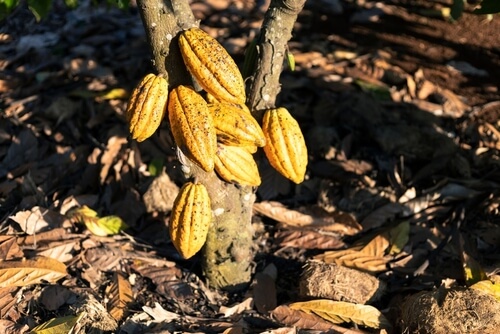Quick look
- Significant price increases for May ICE NY cocoa and May ICE London cocoa, with rallies driven by supply concerns from West Africa.
- A notable decline in Ivory Coast’s cocoa production, amid other challenges, spurs bullish market sentiment.
- The International Cocoa Organization anticipates a widening global cocoa deficit for 2023/24, exacerbating supply pressures.
- High cocoa prices are beginning to suppress global demand, as evidenced by reduced cocoa grindings in key markets.
- Various factors, including El Niño weather patterns and regulatory decisions in the Ivory Coast, contribute to market volatility.
May ICE NY cocoa (CCK24) and May ICE London cocoa #7 (CAK24) saw sharp increases in their latest closings, signalling strong market reactions to the evolving supply landscape. These gains are attributed to robust concerns over the supply of West African cocoa, which has been under strain due to several influencing factors.
Supply Concerns from West Africa
The cocoa market’s bullish trend is largely fueled by diminishing cocoa production in the Ivory Coast, the world’s preeminent cocoa producer. Recent government data highlights a significant reduction in cocoa shipped to ports, marking a decrease from the previous year. Expectations of a reduced mid-crop yield and projections of a substantial year-over-year production drop further complicate this downturn. Nigeria’s decreased cocoa exports also add another layer of supply constraints, intensifying the bullish outlook.
Global Cocoa Market Dynamics
The International Cocoa Organization’s projection of an expanding global cocoa deficit for the 2023/24 season adds to the market’s apprehension. Global cocoa production and grindings should decline. Hence, the stock-to-grindings ratio will hit a record low, highlighting the severe imbalance between supply and demand. Factors such as ageing cocoa trees, prevalent diseases, and underinvestment in West African cocoa farms are identified as primary contributors to this scenario.
The Impact of External Factors
External influences have significantly impacted the market, including the El Niño weather phenomenon and the Ivory Coast cocoa regulator’s decision to halt forward cocoa sales. These events have not only affected production directly but also instilled a sense of uncertainty regarding future supply levels, further complicating the supply-demand equation. Moreover, the fluctuating ICE-monitored cocoa inventories in U.S. ports underscore the market’s sensitivity to such externalities.
Demand Response to High Prices
The surge in cocoa prices has started to dampen global demand. The decline in cocoa grindings across North America, Asia, and Europe shows this. Consequently, this reaction suggests that the market is reacting to the high prices by reducing consumption. If this trend continues, it could alleviate some of the supply pressures. Furthermore, the combined effects of lower production in the Ivory Coast, adverse weather conditions, and regulatory actions have led to high prices. These factors have created a complex landscape for the cocoa market. As these dynamics unfold, stakeholders across the value chain are closely monitoring developments. They aim to gauge the potential impact on the global cocoa market.











